
I get a lot of emails from other authors who are struggling to gain momentum on their titles. Some of these authors have dozens of books out for sale (one industrious chap even had 70+) but sales aren’t where they’d like them. The main reasons I hear about?
“My book is in an unpopular genre.” Or, “Advice about book marketing doesn’t apply to my books. They’re too obscure.”
I get it, I really do. You’ve written something totally outside of the traditional idea of BISAC codes (the genre categories the ISBN companies use) and you’re not sure there’s a market. You’re more interested in writing for yourself first. And that’s cool. But it doesn’t mean there’s no audience.
Hell, if you can get ONE person to read your book, there’s nothing stopping you from getting a thousand. Or ten thousand. Or a million. I’m yet to see a genre of book that doesn’t have an audience large enough to sustain a decent income. But you’ve got to make it easy for readers to find out about your work. And this is where the 80/20 principle comes in. Here’s what I mean:
The 80/20 rule in a nutshell: what’s the 20% of effort that leads to 80% of results? What’s the 80% of effort that leads to 20% of the results? The exact percentages are flexible, but you get the point. Here’s an example:
You spend hours on Facebook and Twitter each day. That’s the 80% of effort. You don’t sell many books on social media – that’s the 20% of results. It’s probably more like 99% / 1%. The next day, you make your book free and email a few popular book blogs or sites to get promoted. You get a ton of downloads and pick up some paid sales. It took you ten minutes to set up. That’s the 20% of effort leading to 80% of results.
Which approach do you think is more scalable?
This same principle can be applied to where your books are listed for sale and how you get readers to check you out. The 80% of effort here is taking a book in a narrow category and attempting to find a large audience. That’s not going to happen.
So let’s switch it up. Going out and finding readers is hard. You’ve got to make it easy for them to find YOU. If your genre is too narrow, pick a new one. Your book doesn’t necessarily have to be in the genre you originally planned. Here’s what I mean:
- Carl Hiaasen’s books are funny. They’re comedies. But guess what? They’re also mysteries. They sell a ton.
- Same with Joe Konrath. His books are described as “humorous” in the blurbs. But he’s one of the most successful indie authors on the planet – because he doesn’t limit himself to that genre. His books are listed under mysteries and thrillers.
- Douglas Adams writes comedies. Weird comedies with a very British slant. His books are science-fiction bestsellers.
- Micheal Bunker wrote a story about Amish “plain” people. How many people do you think are actively searching for Amish fiction? But the book was placed in several science fiction categories and has since gone on to be an Amazon bestseller.
- What about indie superstar A.G. Riddle? His books are a mixture of genres and don’t really fit comfortably into any one label. But he’s had amazing success with his “Origin Mystery” series.
- What about Post Apocalyptic Dystopian Young Adult Science Fiction? That’s about as narrow as you can imagine. But it’s one of the biggest-selling genres on the planet thanks to authors like Suzanne Collins and James Dashner thinking outside the box.
- Or how about Amish Vampires in space? Yup, that’s been done. The concept proved pretty popular. Same with Dinosaur Erotica.
Are your books more obscure than that? I doubt it. But even if they were, that’s not going to stop you from finding an audience. But you aren’t going to find readers if you make things difficult for yourself. Let Amazon and the other retailers do the heavy lifting for you – pick the most effective category that attracts the largest audience without giving yourself too much competition.
In other words, choose the 20% of effort that leads to 80% of results. Written a comedy? See if it fits in “Mystery”, “Thriller”, “Suspense”, “Romance”, “Horror”, “Science Fiction”, or somewhere else.
I can see the tagline now:
“The newest Thriller from Joe McScribbles is a laugh-out-loud riot!”
“Jane Spelling’s latest Science Fiction blockbuster will have you in stitches!”
“Terrifying and hilarious!”
Written about Victorian candlemakers developing a new wick technology in the slums of Liverpool? Put it in Historical Fiction. If there’s a love story, put it in Historical Romance. If it’s scary, put it in Horror or Suspense. Don’t list the book under “candle manufacturing fiction” and expect people to find it.
I’m not sure “candle manufacturing fiction” exists as a sub-genre, but you get the point.
Written an obscure Literary masterpiece? There’s nothing stopping you from listing it in “Coming of Age” or “Christian Fiction” or “Comtemporary Fiction” or “Women’s Fiction” if the storyline fits. It’s not about the style of writing, or the tone, or the plot structure. You could have a six-hour academic debate over whether a book is a “thriller” or a “technothriller”, or a “mystery” or a “suspense” story.
But readers don’t really care about this level of detail. Not so long as they know what they’re getting (that’s what the product description is for). It’s not about whether your book has jokes in it, or obscure references, or whether or not you’ve set the story in the future or the past or the present. Those are things ISBN companies and Big 5 publishers worry about. Readers care more about getting a good story that meets their expectations.
This is true whether you’re writing fiction, non-fiction, poetry, or cave paintings. If something’s not working, switch it up a little. Go to where the readers are, instead of expecting them to come to you.
My advice? If your book is proving difficult to classify, think about the subject matter and find a different (popular) genre or niche that fits. You can use keywords and sub-categories to narrow down that audience further.
It works for Douglas Adams. It can work for you.
Now, I want to hear from you! Have you found certain genres are better sellers than others? Have you tried switching up categories to reach new readers? Leave a note in the comments section below!
If you want a step-by-step guide to getting started on your email list, go download “Reader Magnets”. This free ebook will show you how to put this process in place and start building your email list – click below to grab your copy:












